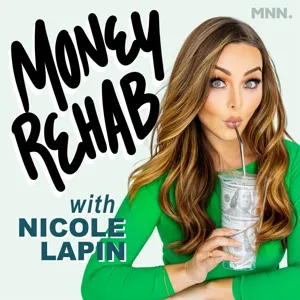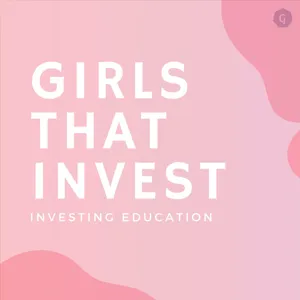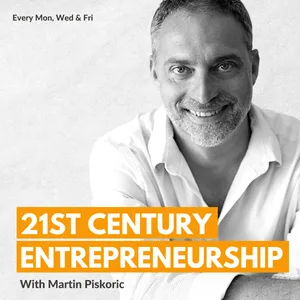Podcast Summary
Adding ownership to digital goods with crypto technologies: Crypto technologies like blockchains can verify existence, uniqueness, ownership, and transaction history of digital goods, potentially disrupting current business models and changing how we interact with and value digital goods
Crypto technologies, such as blockchains, have the potential to add an ownership layer to the internet, making it easier to buy and sell digital goods, including information, art, and music, by verifying their existence, uniqueness, ownership, and transaction history. This could disrupt current business models that profit from creating scarcity and ownership of digital information. Crypto is more than just digital currencies; it's a technology that can change how we interact with and value digital goods. However, we're still in the early stages of understanding and implementing these technologies, and it remains to be seen how they will shape the digital economy.
Understanding the Reality of Crypto and Digital Economies: Crypto and digital economies are not just tools but subject to capitalism's realities, questioning if it will end middlemen companies or lead to a more commercialized internet.
The ongoing development of cryptocurrencies, blockchains, and non-fungible tokens represents an effort to create truly digital economies with digital money, digital goods, digital transaction ledgers, and digital ways to own things of value. However, as Katie Hahn, a general partner at Andreessen Horowitz, points out, it's essential to recognize that these technologies are not just tools but are also subject to the realities of modern capitalism. While some believe that crypto will decentralize the internet and topple big corporate behemoths, skeptics like Hahn question whether it will mean the end of middlemen companies and if it will lead to a more commercialized internet. Hahn, a former Supreme Court clerk and federal prosecutor, offers a nuanced perspective, having seen both the dark side of crypto as a prosecutor and now being a leader in building its future at Andreessen Horowitz. The conversation around digital money, digital ownership ledgers, and digitally owned goods can be simplified by using these terms instead of the more technical jargon.
Revolutionizing Ownership and Transactions with Blockchains: Blockchains enable trustless value transfers between strangers anywhere in the world, revolutionizing traditional financial systems by removing the need for intermediaries
Blockchains are revolutionizing the way we handle ownership and transactions by removing the need for intermediaries or trusted parties. This has profound implications for digital ownership, as it allows for trustless operation through technologies like smart contracts and cryptocurrencies. An example using Bitcoin illustrates this concept: just as the Internet enables the instant, cheap, and free transfer of information, such as emails and photos, blockchains enable the instant, cheap, and free transfer of value, regardless of location. While there are criticisms of blockchains, such as slow transaction times and high fees, the fact remains that they allow for trustless value transfers between strangers anywhere in the world. This is a significant departure from traditional financial systems, which require intermediaries like Venmo or PayPal. In essence, the bits and bytes of a cryptocurrency like Bitcoin function as bearer instruments, making the transfer of value as direct as handing someone cash.
Understanding Digital Scarcity with Bitcoin and NFTs: Bitcoin introduced scarcity to digital assets through blockchain technology, while NFTs provide digital scarcity for goods like art, music, and collectibles, allowing true ownership and transferability, benefiting both consumers and creators.
The concept of scarcity is crucial in understanding the value and importance of digital ownership. Before the advent of digital scarcity, digital goods like music could be easily copied and shared, making them inherently worthless. Bitcoin solved this problem by introducing scarcity through its decentralized and secure blockchain technology. Similarly, non-fungible tokens (NFTs) provide digital scarcity for goods like music, art, or collectibles, allowing true ownership and transferability. This not only benefits consumers but also content creators, who often receive very little revenue from streaming platforms. By introducing scarcity, NFTs enable a more equitable distribution of value and ownership in the digital world.
The future of digitally scarce goods and Web 3.0: Web 3.0 aims to build decentralized platforms for digitally scarce goods, eliminating middlemen and allowing fans to own future royalties, but convenience and critical mass of centralized platforms are concerns.
The future of digitally scarce goods, such as music, could revolutionize the way artists interact with their fans by eliminating centralized middlemen and allowing fans to own a piece of the artist's future royalties. This vision, often referred to as Web 3.0, aims to build decentralized, trustless platforms where ownership and transactions can be verified. However, there are concerns that the convenience and critical mass offered by centralized platforms like Spotify and Netflix may outweigh the benefits of decentralization. It's important to remember that the current state of innovation in crypto and decentralized technologies is still in its early stages, and the end goal may not yet be fully realized. Ultimately, the success of decentralized platforms will depend on whether they can offer a better user experience and value proposition than their centralized counterparts.
Early stages of decentralized innovation: Recognize the evolving nature of decentralized innovation, as new players and business models continue to emerge.
The current state of innovation in the decentralized world, particularly in crypto and non-fungible tokens (NFTs), should not be judged by its end state. We're still in the early stages, and the user experience and convenience are not yet fully ready for mass adoption. Centralized platforms currently hold the power and the customers, but there are socio-economic tailwinds and a growing ethos among younger generations that favor decentralized power. New giants will emerge, but the technology's decentralized nature presents unique challenges. OpenSea, for instance, is a centralized business that makes money by taking a modest take rate on every sale, but the creators of the digitally scarce goods, like digital art, take the vast majority of the money generated. This is a significant difference from traditional tech giants. The key is to recognize that the decentralized world is still evolving, and new players and business models will continue to emerge.
New economic paradigm for content creators with NFTs: NFTs enable creators to earn royalties from future sales and profit from digital art, coexisting with centralized and decentralized marketplaces, and bring down barriers for creator-fan interaction, offering new monetization and value creation opportunities.
NFTs (Non-Fungible Tokens) represent a new economic paradigm for content creators, allowing them to earn future royalties from all future sales and potentially profit from digital art in ways that were not possible before. Centralized marketplaces like OpenSea, which make it easier for consumers to discover and purchase NFTs, may coexist with decentralized platforms. NFTs bring down barriers for content creators to interact with their fans and early adopters, enabling new behaviors such as owning a piece of an undiscovered musician's first song or holding shares of future royalty streams. The social aspect of NFTs is also noteworthy, with examples including online communities and collector's items for tickets to events. Overall, NFTs offer a new way to monetize digital content and create value for both creators and consumers.
Buying an NFT gives you unique digital ownership: When buying an NFT, you're not just getting a copy of the digital artwork, but a unique digital item with proof of ownership on the blockchain
When you buy an NFT (Non-Fungible Token), you're not just purchasing a link or a copy of the digital artwork, but you're acquiring a unique digital item with proof of ownership stored on the blockchain. This ownership can be compared to a deed. However, it's essential to understand that not all blockchains offer permanent storage or the ability to hold the actual digital artwork. Some, like Arweave, are designed specifically for permanence. As an owner, you can display your NFT, give it away, sell it, lend it, or even use it as collateral for other assets. The key difference between NFTs and other digital assets is the irrefutable proof of ownership they provide.
Digital revolution in art and finance: Artists and content creators can monetize unique, digitally scarce pieces of work through NFTs, allowing for economic participation and potential leveling of the playing field.
The digital revolution in art and finance is enabling new ways for artists and content creators to monetize their work and engage with fans beyond traditional methods. NFTs (Non-Fungible Tokens) are a prime example, allowing artists to sell unique, digitally scarce pieces of their work, and even receive a percentage of future sales. This economic participation extends beyond famous artists to those who may not have had the opportunity to monetize their work effectively before. This shift towards decentralized finance and NFTs is transforming the way we value and consume art and media. Moreover, the motivations for purchasing NFTs can vary greatly, from fans expressing their love for an artist to financially-motivated individuals speculating on future value. This economic participation is a significant aspect of the crypto world and has the potential to level the playing field for artists and content creators, regardless of their current level of fame or discovery.
Monetizing digital work with the help of NFTs: NFTs enable artists and content creators to monetize their digital work, follow their passions full-time, and potentially disrupt industries, creating new professions.
NFTs (Non-Fungible Tokens) are revolutionizing the way artists and content creators can monetize their work and pursue their passions full-time, even if they never achieve worldwide fame. This new economic activity, part of the gig economy, allows people to sell digitally scarce items like art, videos, or virtual real estate. The rules for ownership and inheritance of NFTs are still being figured out, but it's likely they will follow the same principles as physical goods. NFTs can be traded and used across different platforms, making them more valuable and versatile than digital items tied to a single platform. The potential for NFTs to disrupt industries and create new professions, such as virtual real estate agents, is immense. As the technology continues to evolve, the possibilities for creators and consumers are endless.
Building the foundation for a new digital economy with NFTs: NFTs enable interoperability for seamless transfer and ownership of digital assets, playing a crucial role in the development of digital economies and expressing identities in increasingly digital worlds
We are on the brink of creating digital economies and digital goods through the development of decentralized technologies like crypto and NFTs. These digital goods and economies will be interoperable and essential in increasingly digital worlds, including metaverses and virtual conference rooms. Interoperability is crucial for the success of NFTs, as it allows for the seamless transfer and ownership of digital assets across different platforms. The importance of NFTs extends beyond the metaverse, as people are already spending more time online and seeking ways to express their personalities and identities digitally. Even skeptics, like the speaker, have found themselves purchasing NFTs for this very reason. The future will be weird, but the foundations for a new digital economy are being laid, and NFTs will play a significant role in it.
Exploring the digital art and NFT market: Opportunities and Challenges: The digital art and NFT market offers creators new ways to monetize their work and ensures ownership traceability through blockchain technology. However, it raises concerns about the environmental impact and role of intermediaries.
The digital art and NFT market represents a new economic model for creators to earn a living from their work, but it also raises important questions about the role of intermediaries and the scalability and environmental impact of the underlying technology. The speaker shares her personal experience of purchasing a unique digital artwork and NFT from artist Aegean, highlighting the importance of smart contracts and the ability to trace ownership on the blockchain. However, she also expresses concerns about the environmental impact of certain blockchain systems, particularly those using proof of work consensus mechanism, which can be energy intensive. She also acknowledges the potential importance of intermediaries for decision-making and addressing issues such as artist royalties and contract alterations. Overall, the speaker emphasizes the importance of considering the nuances of this emerging space and the potential benefits and challenges it presents.
Decentralized community drives Bitcoin's improvement: Bitcoin's community, unlike traditional entities, continues to improve the energy consumption issue through decentralized efforts and potential solutions, such as Ethereum's transition to proof of stake.
While Bitcoin's energy consumption is a valid concern, the decentralized nature of its community allows for continuous improvement and potential solutions, unlike traditional companies or organizations. The community's awareness of the issue and the increasing adoption by institutions add pressure to address the energy consumption issue. Ethereum, another major blockchain, serves as an example of a decentralized technology making a transition to a more energy-efficient consensus mechanism, proof of stake. However, the absence of a centralized figure like Ethereum's Vitalik Buterin in Bitcoin's leadership structure adds complexity to implementing changes. Despite these challenges, the community's incentives to maintain and improve Bitcoin remain strong.
The potential loss of support structures in a decentralized economy: Crypto is demonstrating the potential for decentralized funding of investigative reporting, a crucial part of society, and could democratize economic ownership despite concerns about the loss of traditional support structures.
While the decentralized nature of crypto and web 3.0 has the potential to weaken the control of traditional institutions and corporations, it also raises questions about the loss of structures that once provided support for those who might not thrive in a more individualized and winner-takes-all economy. Traditional institutions have historically taken risks on unknown talent, funded projects, and supported investigative reporting, among other things. However, crypto is starting to demonstrate the possibility of crowdfunding projects and funding investigative reporting through the use of cryptocurrencies. The speaker, who is a former federal prosecutor, argues that investigative journalism is an essential part of society and that the crypto community is beginning to demonstrate the potential for decentralized funding of such projects. While there are concerns about the potential loss of support structures for those who might not thrive in a more decentralized economy, the speaker is optimistic about the potential for crypto to democratize participation and economic ownership.
Acknowledging the Downsides of Crypto and Decentralization: While crypto and decentralization offer benefits, it's crucial to consider potential downsides, such as the hollowing out of institutions and concentration of power in tech giants, which could lead to unintended consequences and privacy concerns.
While crypto and decentralization offer numerous benefits, it's essential to acknowledge and discuss the potential downsides. The speaker recognizes the optimistic perspective towards crypto but emphasizes the importance of considering the negative consequences, such as the hollowing out of institutions that average out creators' value. He also draws parallels to the Internet's evolution, where open protocols led to tech companies gaining significant power, and users ultimately paid the price with privacy concerns and intrusive ads. The speaker acknowledges the societal benefits of crypto but emphasizes the importance of having an open and honest conversation about its potential downsides. He also expresses concerns about the concentration of power in tech giants and the potential unintended consequences of government intervention. In summary, the speaker advocates for a balanced perspective on crypto, acknowledging both its advantages and disadvantages.
Decentralization and user control in Web 3: Web 3 and crypto enable users to own and monetize their data, shifting power back from big tech through decentralized social platforms.
The future of the internet, specifically with the rise of Web 3 and crypto, has the potential to shift power back to users by allowing them to own and monetize their data. This is a significant departure from Web 2 where users create content for free and are subjected to intrusive advertising. Decentralized social platforms are being built on top of crypto protocols, enabling users to decide whether to sell or share their data and potentially earn micropayments. This could lead to a more equitable digital landscape and serve as an alternative to big tech. Three influential books recommended by the speaker include "The Company," which discusses the creation of limited liability corporations and their societal impact, Indra Nooyi's autobiography, and "Palace Walk" by Nagib Mahfouz, which offers insights into life at the turn of the century in Cairo.






